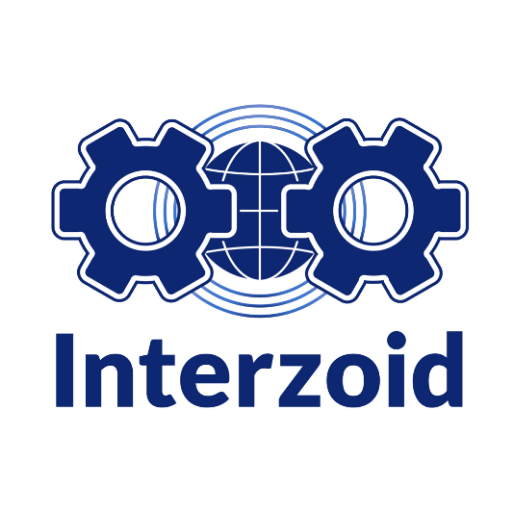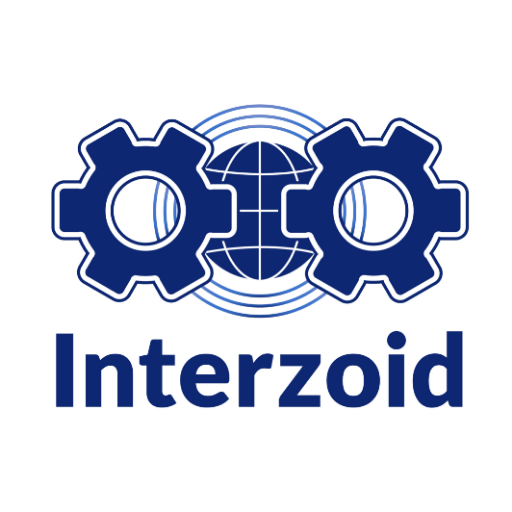Mock sample for your project: Runscope API
Integrate with "Runscope API" from runscope.com in no time with Mockoon's ready to use mock sample

Runscope API
runscope.com
Version: 1.0.0
Integrate third-party APIs faster by using "Runscope API" ready-to-use mock sample. Mocking this API will help you accelerate your development lifecycles and improves your integration tests' quality and reliability by accounting for random failures, slow response time, etc.
It also helps reduce your dependency on third-party APIs: no more accounts to create, API keys to provision, accesses to configure, unplanned downtime, etc.
Description
Manage Runscope programmatically.
Other APIs in the same category
Airbyte Configuration API
Airbyte Configuration API
https://airbyte.io.
This API is a collection of HTTP RPC-style methods. While it is not a REST API, those familiar with REST should find the conventions of this API recognizable.
Here are some conventions that this API follows:
All endpoints are http POST methods.
All endpoints accept data via application/json request bodies. The API does not accept any data via query params.
The naming convention for endpoints is: localhost:8000/{VERSION}/{METHODFAMILY}/{METHODNAME} e.g. localhost:8000/v1/connections/create.
For all update methods, the whole object must be passed in, even the fields that did not change.
Change Management:
The major version of the API endpoint can be determined / specified in the URL localhost:8080/v1/connections/create
Minor version bumps will be invisible to the end user. The user cannot specify minor versions in requests.
All backwards incompatible changes will happen in major version bumps. We will not make backwards incompatible changes in minor version bumps. Examples of non-breaking changes (includes but not limited to...):
Adding fields to request or response bodies.
Adding new HTTP endpoints.
https://airbyte.io.
This API is a collection of HTTP RPC-style methods. While it is not a REST API, those familiar with REST should find the conventions of this API recognizable.
Here are some conventions that this API follows:
All endpoints are http POST methods.
All endpoints accept data via application/json request bodies. The API does not accept any data via query params.
The naming convention for endpoints is: localhost:8000/{VERSION}/{METHODFAMILY}/{METHODNAME} e.g. localhost:8000/v1/connections/create.
For all update methods, the whole object must be passed in, even the fields that did not change.
Change Management:
The major version of the API endpoint can be determined / specified in the URL localhost:8080/v1/connections/create
Minor version bumps will be invisible to the end user. The user cannot specify minor versions in requests.
All backwards incompatible changes will happen in major version bumps. We will not make backwards incompatible changes in minor version bumps. Examples of non-breaking changes (includes but not limited to...):
Adding fields to request or response bodies.
Adding new HTTP endpoints.

Interzoid Get Area Code From Number API
This API provides area code information for a given telephone number.

Interzoid Get Area Code API
This API provides area code information for a given telephone area code.
Appwrite
Appwrite backend as a service cuts up to 70% of the time and costs required for building a modern application. We abstract and simplify common development tasks behind a REST APIs, to help you develop your app in a fast and secure way. For full API documentation and tutorials go to https://appwrite.io/docs
Kubernetes
kubernetes.io

link.fish API
API to easily extract data from websites.
Base URL
All URLs referenced in the documentation have the following base:
You can check anytime how many credits you did use already by logging into your link.fish account at https://app.link.fish and checking under: "Plugins" -> "API Dashboard"
If you have problems, questions or improvement advice please send us an email to [email protected]
Base URL
All URLs referenced in the documentation have the following base:
You can check anytime how many credits you did use already by logging into your link.fish account at https://app.link.fish and checking under: "Plugins" -> "API Dashboard"
If you have problems, questions or improvement advice please send us an email to [email protected]

IBM Containers API
bluemix.net
Containers are virtual software objects that include all the elements that an app needs to run. A container has the benefits of resource isolation and allocation but is more portable and efficient than, for example, a virtual machine.
This documentation describes the IBM Containers API, which is based on the Docker Remote API. The API provides endpoints that you can use to create and manage your single containers and container groups in Bluemix. Endpoints are summarized under the following tags:
Authentication: Retrieve and refresh your TLS certificates.
Private Docker images registry: Create your own private Docker images registry in Bluemix by setting a namespace for your organization.
Images: View, build, and push your images to your private Bluemix registry so you can use them with IBM Containers. You can also scan your container images with the Vulnerability Advisor against standard policies set by the organization manager and a database of known Ubuntu issues.
Single Containers: Create and manage single containers in Bluemix. Use a single container to implement short-lived processes or to run simple tests as you develop an app or service. To make your single container available from the internet, review the Public IP addresses endpoints.
Container Groups: Create and manage your container groups in Bluemix. A container group consists of multiple single containers that are all created from the same container image and as a consequence are configured in the same way. Container groups offer further options at no cost to make your app highly available. These options include in-built load balancing, auto-recovery of unhealthy container instances, and auto-scaling of container instances based on CPU and memory usage. Map a public route to your container group to make your app accessible from the internet.
Public IP addresses: Use these endpoints to request public IP addresses for your space. You can bind this IP address to your container to make your container accessible from the internet.
File shares: Create, list and delete file shares in a space. A file share is a NFS storage system that hosts Docker volumes.
Volumes: Create and manage container volumes in your space to persist the data of your containers.
Each API request requires an HTTP header that includes the 'X-Auth-Token’ and 'X-Auth-Project-Id’ parameter.
X-Auth-Token: The JSON web token (JWT) that you receive when logging into the Bluemix platform. It allows you to use the IBM Containers REST API, access services, and resources. Run cf oauth-token to retrieve your access token information.
X-Auth-Project-Id: The unique ID of your organization space where you want to create or work with your containers. Run cf space --guid, where is the name of your space, to retrieve your space ID.
For further information about how containers work in the IBM Containers service, review the documentation under https://new-console.ng.bluemix.net/docs/containers/container_index.html.
This documentation describes the IBM Containers API, which is based on the Docker Remote API. The API provides endpoints that you can use to create and manage your single containers and container groups in Bluemix. Endpoints are summarized under the following tags:
Authentication: Retrieve and refresh your TLS certificates.
Private Docker images registry: Create your own private Docker images registry in Bluemix by setting a namespace for your organization.
Images: View, build, and push your images to your private Bluemix registry so you can use them with IBM Containers. You can also scan your container images with the Vulnerability Advisor against standard policies set by the organization manager and a database of known Ubuntu issues.
Single Containers: Create and manage single containers in Bluemix. Use a single container to implement short-lived processes or to run simple tests as you develop an app or service. To make your single container available from the internet, review the Public IP addresses endpoints.
Container Groups: Create and manage your container groups in Bluemix. A container group consists of multiple single containers that are all created from the same container image and as a consequence are configured in the same way. Container groups offer further options at no cost to make your app highly available. These options include in-built load balancing, auto-recovery of unhealthy container instances, and auto-scaling of container instances based on CPU and memory usage. Map a public route to your container group to make your app accessible from the internet.
Public IP addresses: Use these endpoints to request public IP addresses for your space. You can bind this IP address to your container to make your container accessible from the internet.
File shares: Create, list and delete file shares in a space. A file share is a NFS storage system that hosts Docker volumes.
Volumes: Create and manage container volumes in your space to persist the data of your containers.
Each API request requires an HTTP header that includes the 'X-Auth-Token’ and 'X-Auth-Project-Id’ parameter.
X-Auth-Token: The JSON web token (JWT) that you receive when logging into the Bluemix platform. It allows you to use the IBM Containers REST API, access services, and resources. Run cf oauth-token to retrieve your access token information.
X-Auth-Project-Id: The unique ID of your organization space where you want to create or work with your containers. Run cf space --guid, where is the name of your space, to retrieve your space ID.
For further information about how containers work in the IBM Containers service, review the documentation under https://new-console.ng.bluemix.net/docs/containers/container_index.html.
ConfigCat Public Management API
Base API URL: https://api.configcat.com
If you prefer the swagger documentation, you can find it here: Swagger UI.
The purpose of this API is to access the ConfigCat platform programmatically.
You can Create, Read, Update and Delete any entities like Feature Flags, Configs, Environments or Products within ConfigCat.
The API is based on HTTP REST, uses resource-oriented URLs, status codes and supports JSON
and JSON+HAL format. Do not use this API for accessing and evaluating feature flag values. Use the SDKs instead.
OpenAPI Specification
The complete specification is publicly available here: swagger.json.
You can use it to generate client libraries in various languages with OpenAPI Generator or
Swagger Codegen to interact with this API.
Authentication
This API uses the Basic HTTP Authentication Scheme.
Throttling and rate limits
All the rate limited API calls are returning information about the current rate limit period in the following HTTP headers:
| Header | Description |
| :- | :- |
| X-Rate-Limit-Remaining | The maximum number of requests remaining in the current rate limit period. |
| X-Rate-Limit-Reset | The time when the current rate limit period resets. |
When the rate limit is exceeded by a request, the API returns with a HTTP 429 - Too many requests status along with a Retry-After HTTP header.
If you prefer the swagger documentation, you can find it here: Swagger UI.
The purpose of this API is to access the ConfigCat platform programmatically.
You can Create, Read, Update and Delete any entities like Feature Flags, Configs, Environments or Products within ConfigCat.
The API is based on HTTP REST, uses resource-oriented URLs, status codes and supports JSON
and JSON+HAL format. Do not use this API for accessing and evaluating feature flag values. Use the SDKs instead.
OpenAPI Specification
The complete specification is publicly available here: swagger.json.
You can use it to generate client libraries in various languages with OpenAPI Generator or
Swagger Codegen to interact with this API.
Authentication
This API uses the Basic HTTP Authentication Scheme.
Throttling and rate limits
All the rate limited API calls are returning information about the current rate limit period in the following HTTP headers:
| Header | Description |
| :- | :- |
| X-Rate-Limit-Remaining | The maximum number of requests remaining in the current rate limit period. |
| X-Rate-Limit-Reset | The time when the current rate limit period resets. |
When the rate limit is exceeded by a request, the API returns with a HTTP 429 - Too many requests status along with a Retry-After HTTP header.

Swagger2OpenAPI Converter
Converter and validator for Swagger 2.0 to OpenAPI 3.0.x definitions

SwaggerHub Registry API
Introduction
This is the registry API for SwaggerHub. It allows you to access, manage, and update your APIs and Domains in SwaggerHub bypassing the Web application.
Authentication
Use your personal API Key: you can find it by visiting the API Key page.
This is the registry API for SwaggerHub. It allows you to access, manage, and update your APIs and Domains in SwaggerHub bypassing the Web application.
Authentication
Use your personal API Key: you can find it by visiting the API Key page.